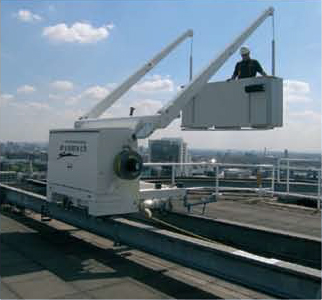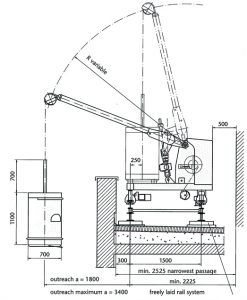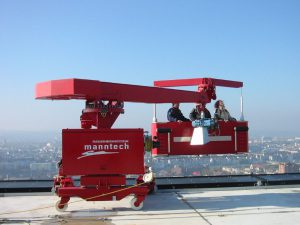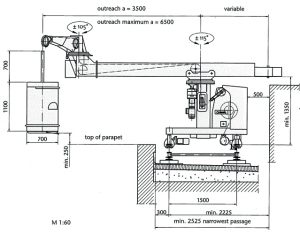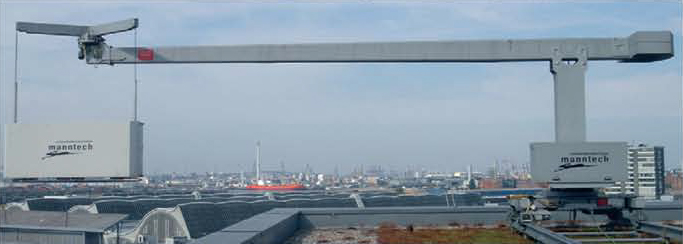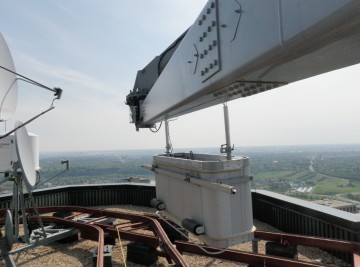
A Building Maintenance Unit (BMU) is an automatic, remote-controlled, or mechanical device, usually suspended from the roof, which moves systematically over some surface of a structure while carrying window washers or mechanical robots to maintain or clean the covered surfaces.
Building Maintenance Units are required on the more complicated building designs, and provide a sophisticated façade access solution. They are usually mounted permanently at roof level, and provide full lateral, horizontal and vertical movement of the working platform, in order to access all surfaces of a building.
The system is designed for scheduled façade maintenance e.g. window washing & external cleaning, and unscheduled maintenance e.g. replacement of glass/façade panels and other repairs.
ATLAS, in partnership with the world leading manufacturer MANNTECH Fassadenbefahrsysteme GmbH, offers the highest quality and most technically advanced Building Maintenance Units (BMU).
- Safest, most reliable and economical solutions for any kind of building design or shape of facades;
- Consulting, planning and design right through to commissioning and after sales service;
- Facade access solutions in close cooperation with architects or building owners;
- Years of international experience and a strong tradition of product development;
- Speedy and reliable planning and design, using the latest techniques of computer aided modelling and calculation;
- The BMU is tailored and specifically designed for the building on which they are installed.

